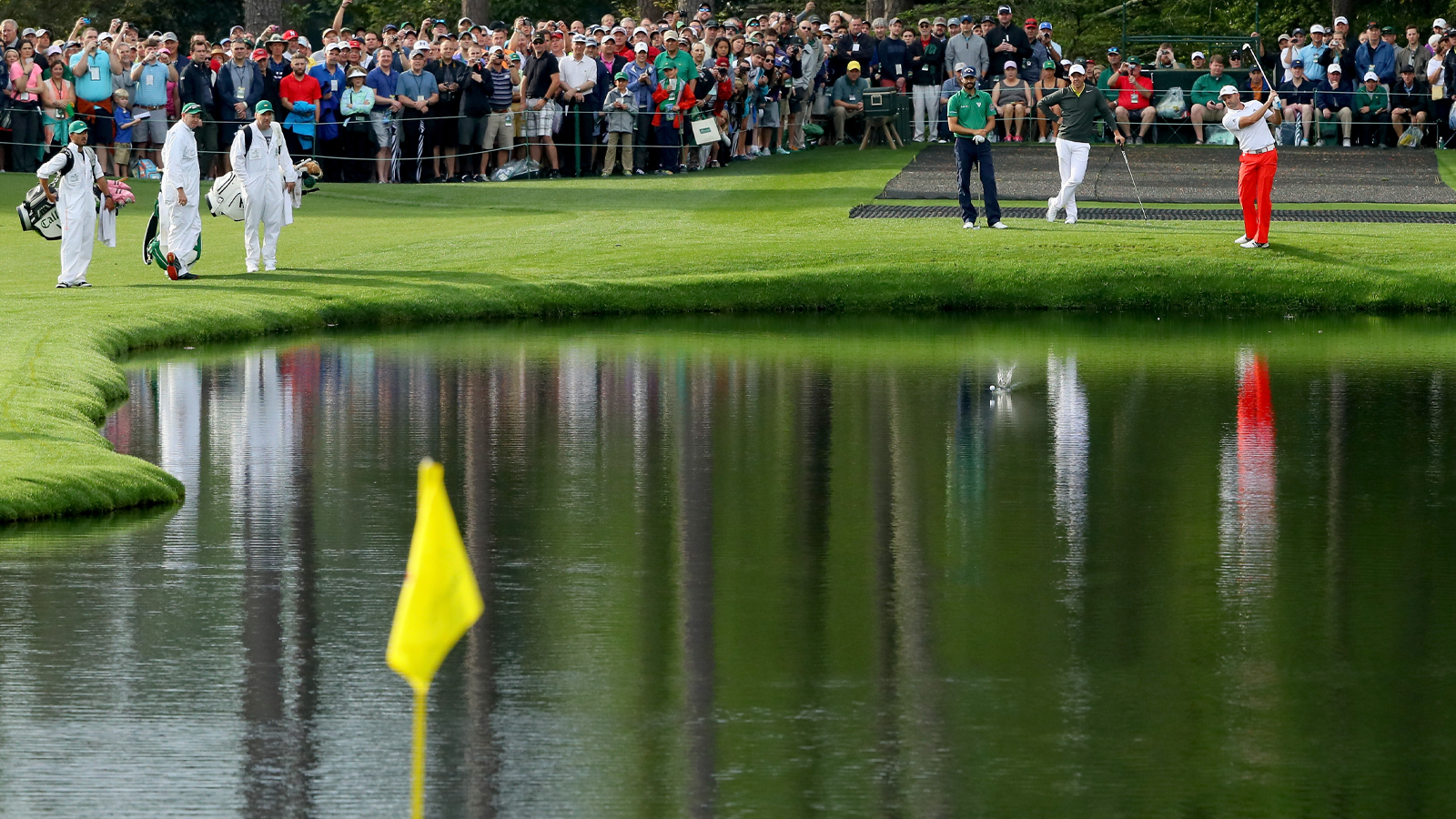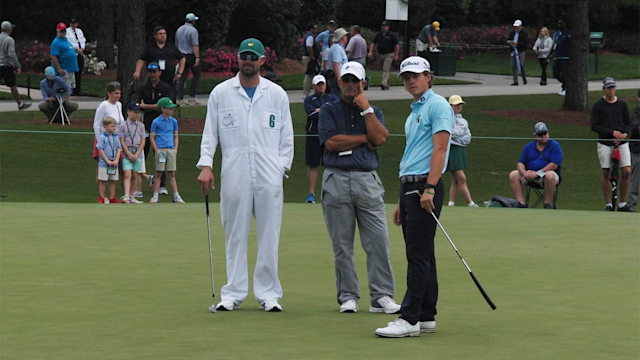quick coaching
Par Threes in Focus: How to Approach Them
By Brendon Elliott, PGA
Published on

Sergio Garcia of Spain skips his ball across the pond on the 16th hole at Augusta National Golf Club.
After a few years hiatus the beloved Masters Par 3 contest made its return. This event has been a Masters tradition since 1960. The inaugural winner was Sam Snead. The event takes place in the northeast corner of the Augusta National property. The 9-hole par 27 layout is a mix of yardages ranging from 70 to 140. Jimmy Walker holds the course record with an 8 under par 19 which included a hole-in-one.
The par 3 contest “curse” comes from the staggering fact that no contest winner has ever gone on to win the Masters in the same year.
Par threes present both a great opportunity for a birdie as well as an easy double bogey. How you approach them, from a strategic perspective, really makes all the difference in your success on them.
Yardage Up
Be sure to get a multitude of yardages before you ultimately choose your club. Beyond the typical yardage to the pin, which is standard, I want you to consider the front, middle and back yardages. In addition, get your yardages to carry any hazards in front of the green as well as those beyond the green.
External Factors
In the same breath of getting your yardages on the par 3 you are about to play; you need to look at other factors that will affect your approach into the green. The elevation, and whether the tee is above the green or if you are playing up to the green from the tee box. Wind, the ultimate external factor in golf, is absolutely something to be very aware of as you decide what to hit.
Tee it Up
For most golfers, it is to your advantage to tee the ball up slightly. As crazy as it sounds, teeing the ball up in the slightest from ground level can allow you to catch the ball cleaner at impact.
Don’t Get Greedy
As I said earlier, Par 3’s present both a great opportunity for a birdie as well as an easy double bogey. That all depends on two things…how bold you get on your line and how good your short game is if you miss that line. I would always error on the side of caution.
As Always, Short Game and Putting is Key
With golf in general, this can be said. On par threes, its everything. Granted, hitting a good tee shot is important, but, short of making an ace, you still need to rely on your putting. If you miss the green, you will rely on getting up and down. If your chipping and pitching is not sharp, you can see how quickly you can make a bogey or worse.

